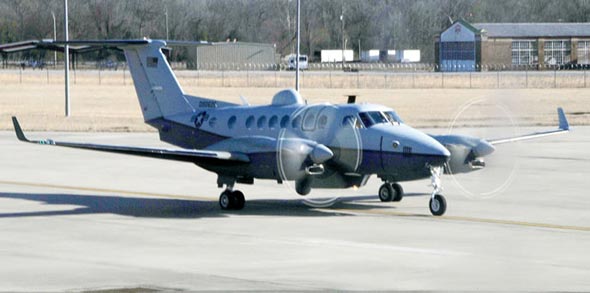
The U.S. Army is embarking on an acquisition program of a new aerial surveillance manned aircraft designated ‘Enhanced Medium Altitude Reconnaissance Surveillance System’ (EMARSS), augmenting tactical ground units with persistent surveillance, intelligence gathering and situational understanding, supporting their ‘Overwatch’ capability. The new program of record represents a low-risk approach to field advanced, critical intelligence gathering capabilities based on the field operationally Hawker Beechcraft 350ER (C-12) aircraft. The EMARSS will be equipped conduct reconnaissance, surveillance and target acquisition operations in support of ground combat units in overwatch and to maintain a persistent presence over demonstrated at-risk areas. The program calls for the delivery of four engineering and manufacturing development aircraft within 18 months of contract award. The Army will have an option to buy four additional aircraft as part of the low-rate initial production phase. These aircraft will support the Army’s Aerial Exploitation Battalions (AEB), operated under the Army Intelligence and Security Command (INSCOM).
Unlike the Guardrail and other Signal Intelligence (SIGINT)-specific platforms that operate in groups, EMARSS is designed to operate as a single platform tasked with tactical missions, flying at medium altitude to optimize sensor data collection on the target area of interest while avoiding known threats. Flight tracks may be selected to strike a balance among the capabilities of multiple sensors (low level circles for imaging sensors, long, high altitude tracks for Communications Intelligence (COMINT). This operational concept represents a shift from the Army’s previous concept of using Airborne Common Sensors (ACS) employing SIGINT and visual Intelligence (VISINT) assets on a common platform, tasked at the operational and theater level.
Through the modification process, the aircraft will be fitted with the EMARSS system, comprising Electro-optic/Infrared (EO/IR) Full Motion Video (FMV) sensor, a COMINT collection system, an Aerial Precision Guidance (APG) system, line-of-site (LOS) tactical and beyond line-of-site (LOS/BLOS) communications suites, two operator workstations and a self-protection suite. The system will provide a future manned multi-INT Airborne Intelligence Surveillance and Reconnaissance (AISR) system providing persistent capability to detect, locate, classify/identify, and track surface targets in day/night, near-all-weather conditions with a high degree of timeliness and accuracy.
Proposals for the program were submitted in June 2010. The program calls for the delivery of four engineering and manufacturing development aircraft within 18 months of contract award. The Army will have an option to buy four additional aircraft as part of the low-rate initial production phase. Northrop Grumman, Boeing and L-3 are known to compete for the program as prime contractors. While Boeing and Northrop Grumman are eying the program which surfaced as a major C4ISR program of record, L-3 is well positioned to compete with the experience it gathered through the Liberty MC-12 platform. The C-12 has also been operating successfully on airborne counter-IED missions, supporting Task Force ODIN in its IED hunting activities in Iraq and Afghanistan.



















